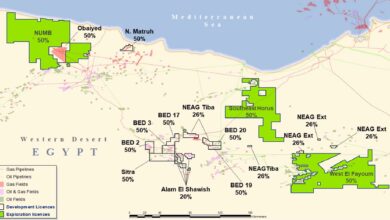Smooth Operators: Personal, process safety should go hand in hand
By Linda Hsieh, managing editor
A group of HSE professionals calling themselves the “Smooth Operators” are meeting quarterly to discuss common themes around HSE management, potentially with the result of streamlining requirements for contractors who work for them. Representatives from three members of the operator group made up a panel session last week at the 2013 IADC Drilling HSE&T Asia Pacific Conference in Singapore, discussing key safety areas for improvement. “This (forum) is a fairly new concept in the region. For drilling contractors, you have a thing called the International Association of Drilling Contractors, but the operators don’t have anything similar,” moderator Wayne Bauer said in kicking off the session.
“When they get together, they sit down and discuss some of the common issues they’re having with their contractors … and how they can go about trying to alleviate some of the stress they’re putting on (contractors),” Mr Bauer, principle consultant – safety & risk, HSE and risk management, for RPS Australia Asia Pacific, said. Panelists participating in the discussion were Bob Thompson, IBU D&C HES advisor for Chevron Indonesia; Alain Moonen, wells HSE manager for Shell Integrated Gas; and Mohd Azmi Ali, HSE engineer for Kebabangan Petroleum Operating Co (KPOC).
Within personal safety, dropped objects was one safety issue that all three operators pointed to as a significant area of focus. “We still have a lot of objects dropping,” Mr Moonen said. “It’s very concerning. These are the real killers out there.”
Hand and finger injuries is another area of strong concern. “This is where the rubber meets the road as far as the individual is concerned. They still happen, and we’re looking for opportunities to improve,” Mr Thompson said, adding that manual handling is also a common area where people hurt themselves. “People try to lift things that they really shouldn’t be lifting. They try to do things that they should be considering mechanical lifting to undertake.”
Mr Thompson also pointed to fitness of duty as an increasing safety concern as a large number of experienced offshore workers get older. “In some of these operations, there are no second chances. There comes a time when we’ve got to hang up our boots,” he urged.
Other areas of concern cited by the operators included short-service employee management, temporary pipework and slips and trips.
On the process safety side, Mr Moonen noted that Shell launched a new campaign in late March called “Think Process Safety.” “It’s like the lifesaving rules that were introduced about two years ago… This is 10 elements of process safety that, if you look back at our incidents, if you could have worked on those 10 elements, you could have avoided an incident.”
Mr Moonen shared four of the 10 elements with the audience:
• People competency and compliance: Asking every employee to be well control competent for any HSE-critical role they have;
• Barrier ownership: Everyone in a safety-critical role must understand what barriers they’re responsible for;
• Equipment: Managed through the Electronic Well Control Assurance Tool, Shell will be able to see in real time the health of their well control equipment globally, Mr Moonen said; and
• Management of change: Ensuring that potential hazards introduced by change are analyzed.
Mr Ali said that KPOC, which has three primary shareholders in Petronas Carigali, Shell and ConocoPhillips, is still a very new company. A budget was recently approved this year for two rigs for a total 12-month drilling campaign. “In the current stage, we’re still fabricating our topside,” he said, and the substructure is being towed to location.
Although the company has no production yet, Mr Ali explained that KPOC has already awarded approximately 60 contracts to service companies. “Our challenge as a new operator is, how are we going to manage those contractors?”
During the Q&A portion of the panel session, one audience member urged the Smooth Operators to bring IADC into consultation, referencing program rollouts by joint oil companies in Australia that he believes could have gone more smoothly with IADC in the discussion.
The panelists noted that although they haven’t yet brought in IADC on their meetings, they are open to the idea. “Once we get ourselves together and see if we can get more operators behind us, of course having a rep from the IADC, I think that’s absolutely key, because otherwise we’re just second-guessing,” Mr Moonen said.
Another audience member asked for the panelists’ thoughts on how to prioritize between process safety and personal safety in order to achieve an appropriate balance, and the operators agreed that one shouldn’t exclude the other and, in fact, they should go hand in hand.
“How do we prioritize? That’s the $64,000 question. The only thing I can say to you is, risk assess. That’s the tool to use… You know your business far better than any outsider,” Mr Thompson said. He added that he sometimes senses panic when talking to contractors about process safety but believes it’s the operator’s duty to assist contractors with process safety management. “We’ve been doing the majority of it anyways. We’ve been testing our equipment, we train our people, we have procedures in place, but we have to put in that extra effort to verify, to assure that it all meets our requirements for our operations.”




